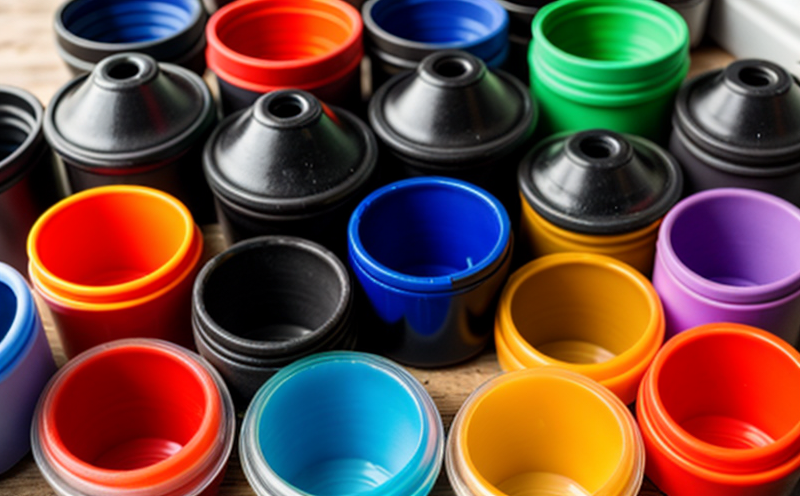EN 15353 Recycled Polyethylene and Polypropylene Mixtures Testing
The European Standard EN 15353 provides a robust framework for the testing of recycled polyethylene (PE) and polypropylene (PP) mixtures. This standard is crucial in ensuring that recycled polymers maintain high quality, reliability, and performance, which are essential factors in their successful integration into new products. The scope of EN 15353 covers a wide range of tests designed to evaluate the properties of these materials, including mechanical strength, thermal stability, chemical resistance, and color consistency.
Recycling plastics like PE and PP is not only beneficial for reducing waste but also helps in conserving resources and energy. By adhering to EN 15353, manufacturers can ensure their recycled plastics meet the necessary quality standards, thereby enhancing product performance while contributing to environmental sustainability.
The first step in this testing process involves thorough sample preparation, which includes cleaning, drying, and possibly chopping or grinding the samples into uniform pieces. The chosen specimens must accurately represent the characteristics of the recycled plastic mixture being tested. Once prepared, these samples undergo a series of tests aimed at assessing various physical and mechanical properties.
The tests include but are not limited to tensile strength, impact resistance, elongation at break, modulus of elasticity, and hardness. These measurements help determine how well the recycled material can withstand stress without breaking or deforming excessively under load conditions. Additionally, thermal analysis such as Differential Scanning Calorimetry (DSC) is used to evaluate melting points and crystallinity levels.
Chemical resistance testing assesses the ability of the recycled plastics to resist degradation from exposure to chemicals commonly found in industrial environments or consumer products. This ensures that the material remains stable over time, maintaining its intended functionality throughout its lifecycle. Another important aspect tested is color consistency, which guarantees uniform appearance across different batches and end uses.
By conducting these comprehensive tests according to EN 15353, labs can provide reliable data about the quality of recycled PE and PP mixtures, helping clients make informed decisions regarding material selection for their applications. This standard also plays a key role in promoting circular economy principles by encouraging responsible use of waste materials.
In conclusion, adhering to EN 15353 ensures that recycled polyethylene and polypropylene mixtures meet stringent quality standards, thereby enhancing product performance while supporting environmental sustainability goals.
Why It Matters
The significance of EN 15353 lies in its ability to promote the effective utilization of recycled plastics within various industries. As global awareness grows regarding environmental issues, there is increasing pressure on companies to adopt sustainable practices that minimize waste and reduce carbon footprints. Recycled PE and PP are increasingly being incorporated into manufacturing processes due to their potential cost savings compared to virgin raw materials.
However, ensuring the quality of these recycled polymers through rigorous testing aligns with broader sustainability objectives such as reducing landfill usage and conserving natural resources. By following EN 15353 guidelines during production stages, manufacturers can verify that each batch meets specified performance criteria before being used in final products. This approach fosters trust among consumers who are increasingly prioritizing eco-friendly options.
Moreover, compliance with this standard helps businesses comply with regulatory requirements set forth by governments around the world aimed at fostering sustainable development. It also supports industry certifications like ISO 14001 and LEED, which emphasize environmental performance as part of their criteria for certification.
In summary, implementing EN 15353 testing ensures that recycled PE and PP mixtures are reliable and consistent in terms of quality, thus contributing positively to both business operations and societal well-being.
Quality and Reliability Assurance
The importance of quality assurance cannot be overstated when dealing with recycled plastics. Recycled polyethylene (PE) and polypropylene (PP) mixtures must meet the same rigorous standards as virgin materials to ensure consistent performance across all applications. This section outlines key aspects related to ensuring high-quality recycled plastic products through adherence to EN 15353.
- Material Selection: Careful selection of input materials is critical for achieving desired outcomes during recycling processes. Proper classification and sorting help maintain purity levels in the final product.
- Precise Measurement Techniques: Accurate measurements throughout each step ensure precise control over variables affecting outcome quality, such as temperature, pressure, time duration, etc.
- Robust Analytical Methods: Utilizing advanced analytical tools like FTIR spectroscopy allows for detailed analysis of molecular structure changes during the recycling process. This information can guide further refinements to improve overall product quality.
By integrating these elements into daily operations, businesses can significantly enhance their ability to produce high-quality recycled PE and PP mixtures that satisfy customer expectations while adhering to industry best practices outlined in EN 15353.
In summary, strict adherence to quality assurance protocols based on EN 15353 ensures consistent production of reliable recycled plastics, fostering trust among stakeholders involved in the supply chain.
Environmental and Sustainability Contributions
- Reduction of Waste: By recycling PE and PP, we divert millions of tons of waste from landfills annually. This reduces greenhouse gas emissions associated with decomposing organic matter.
- Conservation of Resources: Using recycled plastics instead of extracting new raw materials helps preserve finite resources like petroleum reserves used in manufacturing virgin polyolefins.
- Energy Savings: Producing recycled polymers typically requires less energy than creating fresh ones from raw sources, further reducing environmental impact.
- Biodiversity Protection: Lessening reliance on fossil fuels supports efforts to protect ecosystems threatened by overexploitation of natural habitats.
Incorporating recycled PE and PP into industrial processes aligns with global initiatives promoting sustainable practices. These actions not only contribute positively towards meeting international commitments but also enhance brand reputation among eco-conscious consumers seeking environmentally responsible products.





